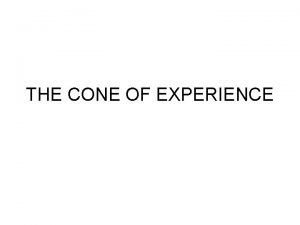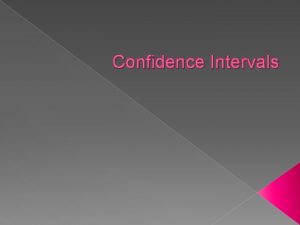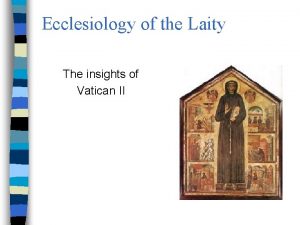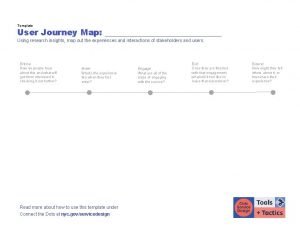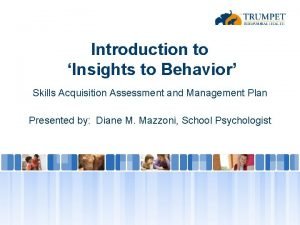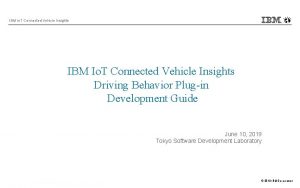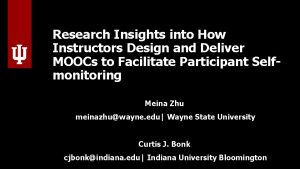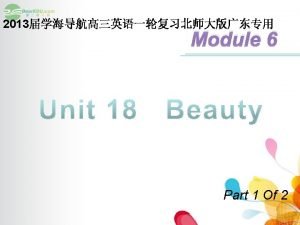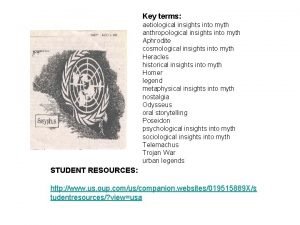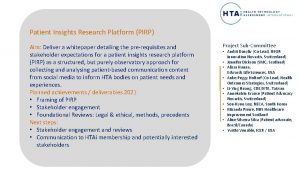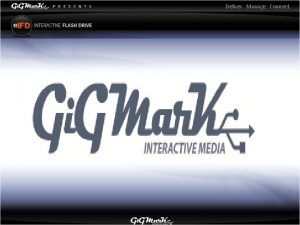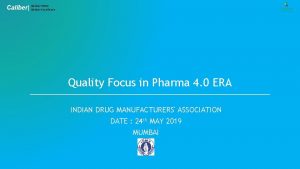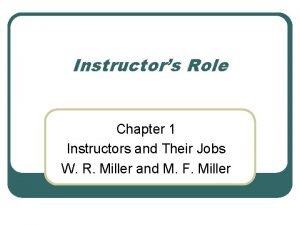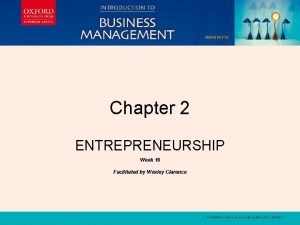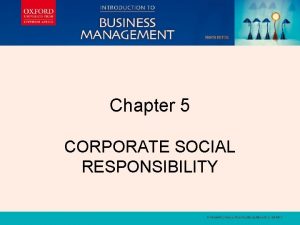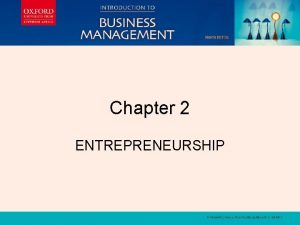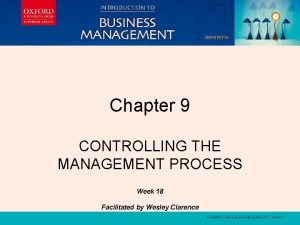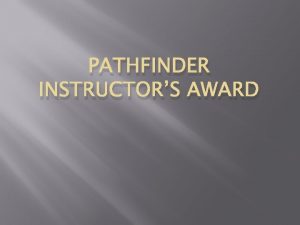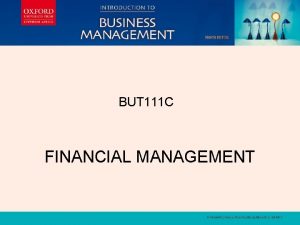Research Insights into How Instructors Design and Deliver
















































- Slides: 48

Research Insights into How Instructors Design and Deliver MOOCs to Facilitate Participant Selfmonitoring Meina Zhu meinazhu@wayne. edu| Wayne State University Curtis J. Bonk cjbonk@indiana. edu| Indiana University Bloomington

Research Theme #1 • Theme #1: Meina Zhu, Annisa Sari, Ying Tang (a visiting scholar in Hong Kong…now post-doc in Informatics), and I have spent four years developing a unique database of over 3, 300 massive open online course (MOOC) instructors from around the world. • We have mined by looking at MOOC instructor motivation (why do they do this? ), personalization practices, cultural sensitivity, gamification practices, instructional design challenges, pedagogical practices, how they foster learner self-directed learning, professional development (how are they trained), engagement and altruistic behaviors, etc.

Research Theme #2 • Theme #2: Meina and Annisa are also working with Mimi Lee (an IST alum at the U of Houston) to do a systematic comprehensive review of ALL MOOC research in SCOPUS database and other journals not in SCOPUS sinception (nearly 500 studies) (2009 -2019). I am supervising the project and mentoring them so they learn to publish without my name attached.

Outline 1. Research Background 2. Research Purpose and Questions 3. Research Design 4. Results 5. Discussion, Conclusion, Limitations, and Implications 4

Key Terms

Key Terms Massive Open Online Courses (MOOCs) Coined by David Cormier from Canada when he referred to the Connectivism and Connective Knowledge course (de Freitas et al. , 2015; Fini, 2009). 6

Key Terms “Massive” The large number of learners enrolled in a MOOC. One study revealed that the median number of learners in a MOOC was around 8, 000 2016) (Chuang & Ho, at the time of the study. 7

Key Terms “Open” Access to the course content. Usually, learners enroll in MOOCs with minimal requirements; once enrolled, they can obtain all course resources, interact with peers, and share their knowledge with classmates (Daniel, 2012; Kop, 2011; Mc. Auley, Stewart, Siemens, & Cormier, 2010). 8

Key Terms Self-directed learning (SDL) (Garrison, 1997) (1) Self-management (2) Self-monitoring (3) Motivation 9

MOOCs Examples 10

MOOC Certificate 11

MOOC Degree 12

MOOC Degree 13

Ed. X: From Micro. Masters to Online Master’s Degrees 14

MOOC Degree 15

MOOCs Trends Year of MOOC-based Degrees: A Review of MOOC Stats and Trends in 2018, Dhawal Shah, Class Central--January 6, 2019 Top five MOOC providers 16

MOOCs Stats Year of MOOC-based Degrees: A Review of MOOC Stats and Trends in 2018, Dhawal Shah, Class Central--January 6, 2019 17

Research Background

Research Background • Learners need self-directed learning skills and strategies to be successful in MOOCs Mustain, 2016), (Kop & Fournier, 2010; Littlejohn, Hood, Milligan, & as there is a lack of personalized interaction with teachers. • Self-monitoring, as one of the SDL skills, can improve learning performance (Chang, 2007; Coleman & Webber, 2002). • Teaching self-monitoring skills will benefit learners (e. g. , Delclos & Harrington, 1991; Maag et al. , 1992; Malone & Mastropieri, 1991; Schunk, 1982). 19

Research Background • However, few studies have examined instructional design and the delivery of instruction using MOOCs from instructor perspectives 2018; Margaryan et al. , 2015; Watson et al. , 2016) ; especially (Zhu, Sari, & Lee, lacking is research on instructors’ perception of student self-monitoring and how they design MOOCs to facilitate student self-monitoring. 20

Research Purpose and Questions

Research Purpose • This study is to inform instructors or instructional designers and MOOC providers of the current practices of designing and delivering MOOCs to facilitate student self-monitoring by finding out how the instructors who are concerned with facilitating self-monitoring skills put these considerations into MOOC design. 22

Research Questions 1. How do MOOC instructors design and deliver their MOOCs to facilitate students’ selfmonitoring skills? 2. How are various technologies employed to support MOOC learners’ self-monitoring skills? 23

Research Design

Research Design Explanatory sequential mixed methods design Pilot interview with 4 instructors Pilot survey with 48 instructors Survey 198 instructors Review 22 MOOCs of interviewees (Creswell & Plano-Clark, 2017) Interview 22 instructors Review 22 MOOCs of interviewees 25

Data Collections Survey: • Volunteer sampling (Creswell & Plano-Clark, 2017) • 198 instructors responded to the survey (18% response rate) Interview: • Homogeneous purposeful sampling (Creswell & Plano-Clark, 2017; Patton, 2002) • Maximal variation sampling (Creswell & Plano-Clark, 2017) • 22 interviewees via Zoom Document analysis: • Reviewed 22 interviewees’ MOOCs 26

Pseudonym Country Subject area Platform Gender No. of O/B No. of M Mode of the M Lucas US Social science ed. X M 0 1 I without T Branden US Education Udacity M 0 5 or more Self-paced Logan US Literacy and Language Coursera M 5 or more I with T Emma US Literacy and Language Coursera F 2 1 Self-paced Jason US ed. X M 1 1 I with T Jackson US Medicine and health Coursera M 5 or more 1 Self-paced Samuel US Education Future. Learn M 4 3 Self-paced Hannah US Education Blackboard F 5 or more 1 I with T Ashley US Education Ed. X F 0 5 or more I with T Andrew UK Art Future. Learn M 0 3 I with T Emily UK Medicine and health Future. Learn F 2 2 I with T Aiden UK Social science Future. Learn M 0 1 Self-paced Henry UK Social science Future. Learn M 0 1 Self-paced Joseph UK Medicine and health Future. Learn M 1 1 Self-paced Joshua UK Literacy and language Future. Learn M 2 2 I with T Mason Australia Education Coursera M 5 or more 1 I with T Ethan Australia Business Coursera M 3 1 I without T Ben Australia Social science ed. X M 1 1 I with T Paul France Computer science Coursera M 1 1 I with T Fernando Belgium Research methods Blackboard M 5 or more 3 I with T Jacob Netherland Science Coursera M 0 1 I with T Data Collections Science Interview: 27

Data Analysis RQ 1 RQ 2 RQ 3 Data Sources Data analysis Tools Survey Descriptive statistics SPSS Interview Content analysis (Leech & Onwuegbuzie, 2007) NVivo Survey Descriptive statistics SPSS Interview Content analysis NVivo Document Content analysis NVivo analysis 28

Trustworthiness 1. Validity survey: Experts review, think-aloud interview, and pilot test (PCA) 2. Reliability survey: Pilot test and internal consistency reliability (Cronbach 3. 4. 5. 6. alpha) Triangulation: Data sources, researchers, and methods Member checks: Interview transcriptions Peer debriefing: Committee and colleagues Researcher reflexivity: Constant reflection and be forthright with our positions 7. Thick description: Report the context, data sources, and analyses in detail 8. Prolonged engagement: Immerse in instructors’ MOOCs before the interview and continue reviewing the MOOCs after the interview 29

Survey Participant Disciplines MOOC Subject Areas Social Science 45 Medicine and Health 27 24 Language and Literacy Business and Management 22 14 Art and Humanity Physical Science 13 Data Science 12 Computer Science 12 Biology 10 Math 9 Engineering 5 N/A 5 0 5 10 15 20 25 30 35 40 45 50 30

Results

RQ 1 Design and the Delivery of MOOCs to Facilitate Student Self-Monitoring Skills Table 1 Mean Score and Standard Deviation of the Specific Self-Monitoring Skills that the Participants’ MOOC Facilitate Items Mean SD 1. 1. 1. helps the student be in control of his/her learning 4. 15 0. 55 helps the student set his/her own learning goals 3. 68 0. 91 helps the student evaluate his/her own performance 3. 94 0. 78 helps the student be responsible for his/her learning 4. 06 0. 79 helps the student be able to focus on a problem 3. 87 0. 74 helps the student be able to find out information related to learning content for him/herself 4. 02 0. 70 3. 73 0. 74 1. helps the student have high beliefs in his/her abilities of learning 32

RQ 1 Strategies to Facilitate Self-monitoring • Both internal feedback and external feedback were provided to help students’ self-monitoring. Self-monitoring Internal Cognition Strategies MOOC instructors provided quizzes for self-assessment, tutorial on technology use, learning advice, learning aids, and instructional modeling, feedback etc. Meta-cog MOOC instructors encouraged students to reflect and think critically by providing reflection questions and building learning community. External MOOC instructors, teaching assistants, and peers were involved in providing feedback external feedback. 33

RQ 1 Strategies to Facilitate Self-monitoring • Cognition • Lucas, a social science instructor stated: I do think frequent quizzes and somewhat lengthy quizzes are really helpful. . . It makes the whole thing hang together as a unit. So, I gave a little quizzes at the end of my videos. 34

RQ 1 Strategies to Facilitate Self-monitoring Figure 1. Example of the quizzes embedded in videos used in MOOCs 35

RQ 1 Strategies to Facilitate Self-monitoring • Metacognition • A science instructor from the US, Samuel, utilized weekly questions to foster self-monitoring and reflection in his MOOC. As he stated: We do ask, kind of, a summary discussion question at the end of the week. I'll ask: “What did you learn? How do you feel about that? How would this apply to a real-world application? ” So, we asked those kind[s] of reflection questions. 36

RQ 1 Strategies to Facilitate Self-monitoring • External Feedback-Instructor Feedback • Joseph from the UK provided feedback through panels or lectures. As Joseph explained: We have [a] discussion moderator, who was also in that space talking to students. So, we try to engage students on some of those points, and question some of the things that they're saying. Maybe get them to reflect. 37

RQ 1 Strategies to Facilitate Self-monitoring • External Feedback-Peer Feedback • Emma, encouraged learners to provide feedback to their peers. As she observed: We also put in peer evaluation because the interaction between students would motivate them. We give a very, very basic syllabus because we don't know what the educational background and the levels of the students. We gave them five different key points to enable them to evaluate other students on assignment. 38

RQ 1 Strategies to Facilitate Self-monitoring Figure 2. Example of tool for peer-assessment in MOOCs 39

RQ 1 Strategies to Facilitate Self-monitoring Figure 3. Example from discussion forum used for building a learning community 40

RQ 2 Tech Use for Self-monitoring • Synchronous communication technologies o Google Hangouts You. Tube Live • Asynchronous communication technologies o Discussion forum Blog Slackbot Flickr • Feedback technologies 41

Discussion, Conclusion, Limitations, and Implications

Limitations • This study did not include MOOC instructors whose MOOCs were not delivered in English • Low response rate • We could not verify whether the strategies that MOOC instructors reported were effective or not 43

Discussion and Conclusion • Facilitate Self-monitoring through self-assessment: Such results concurred with the findings reported a few years ago by Kulkarni et al. (2013). • Facilitate Self-monitoring through fostering reflection: the results are in line with the implications of a study by Parker et al. (1995) and Schraw (1998). • External feedback (instructor, TAs, and peers) motivates students as well as helps learners with their self-monitoring. • Tech for Self-monitoring: These technologies included: (1) synchronous communication technologies, (2) asynchronous communication technologies, and (3) feedback tools. The results confirm with the findings of Blaschke (2012) and Junco, Heiberger, and Loken (2010) that social media can support students SDL. 44

Implications for Future Research and Practice • Future research might want to explore different forms of instructional scaffolds and supports for self-monitoring • Educators might want to design and evaluate innovative training programs for SDL in this age of massively open online teaching and learning • Designers of MOOC platforms as well as MOOC vendors might evaluate MOOC retention and completion rates resulting from the introduction of new technology tools and features for self-monitoring, self-management, and motivation 45

Top 10 Strategies to Facilitate SDL in MOOCs 1. Helping students set their own learning goals; 2. Building learning community; 3. Offering immediate feedback; 4. Embedding quizzes for self-assessment; 5. Providing progress indicators; 6. Providing reflection questions; 7. Designing short learning units; 8. Providing flexible timelines; 9. Highlighting estimated time frames; 10. Making available optional learning materials. 46

Follow-up study (in process) MOOC Student Perceptions of Effective SDL Strategies § Survey (n = 314) § Interview MOOC students § Document analysis (MOOC course review) 47

Thank you! Questions and Comments? Meina Zhu meinazhu@wayne. edu| Wayne State University Curtis J. Bonk cjbonk@indiana. edu| Indiana University Bloomington
 Edgar dale cone of learning
Edgar dale cone of learning Dream design deliver
Dream design deliver Create deliver capture value
Create deliver capture value How will you bill and deliver the guest laundry
How will you bill and deliver the guest laundry We deliver the world
We deliver the world Stack card in warehouse
Stack card in warehouse Offer 3.hali
Offer 3.hali A truck driver is attempting to deliver some furniture
A truck driver is attempting to deliver some furniture To entertain speech
To entertain speech Cheapest to deliver bond
Cheapest to deliver bond Cyberextortionist definition
Cyberextortionist definition Shona quiz
Shona quiz Together we deliver
Together we deliver Discover define develop deliver
Discover define develop deliver Does ups deliver on saturdays
Does ups deliver on saturdays From the fury of the northmen deliver us
From the fury of the northmen deliver us Failure to deliver, short selling
Failure to deliver, short selling A catalog sales company promises to deliver
A catalog sales company promises to deliver A truck driver is attempting to deliver some furniture
A truck driver is attempting to deliver some furniture Methods versus methodology
Methods versus methodology Research appendix sample
Research appendix sample Methodology errors
Methodology errors Types of exploratory research
Types of exploratory research Nature of qualitative research
Nature of qualitative research Relie check
Relie check Managing marketing information
Managing marketing information Presenting insights and findings using written reports
Presenting insights and findings using written reports Insights and understanding ecclesiology
Insights and understanding ecclesiology Customer journey map template doc
Customer journey map template doc Relie responsible lending and insights engine
Relie responsible lending and insights engine Relie responsible lending and insights engine
Relie responsible lending and insights engine Relie responsible lending and insights engine
Relie responsible lending and insights engine Relie responsible lending and insights engine
Relie responsible lending and insights engine Quotes on big data analytics
Quotes on big data analytics Konjunktiot ja sidesanat englanti
Konjunktiot ja sidesanat englanti Social media consumer insights
Social media consumer insights Real insight software
Real insight software Demand measurement in marketing
Demand measurement in marketing Aruba ai insights
Aruba ai insights Ibm connected vehicle insights
Ibm connected vehicle insights Exploration insights portfolio
Exploration insights portfolio Article vi code of ethics
Article vi code of ethics Nia future releases
Nia future releases Dale sanftl
Dale sanftl Insights to behavior
Insights to behavior Insights dundee
Insights dundee Connected vehicle insights
Connected vehicle insights Insights on demand gpc
Insights on demand gpc Martini tag insights
Martini tag insights
